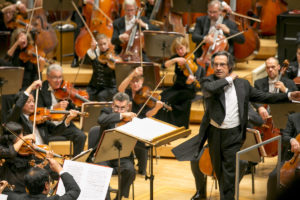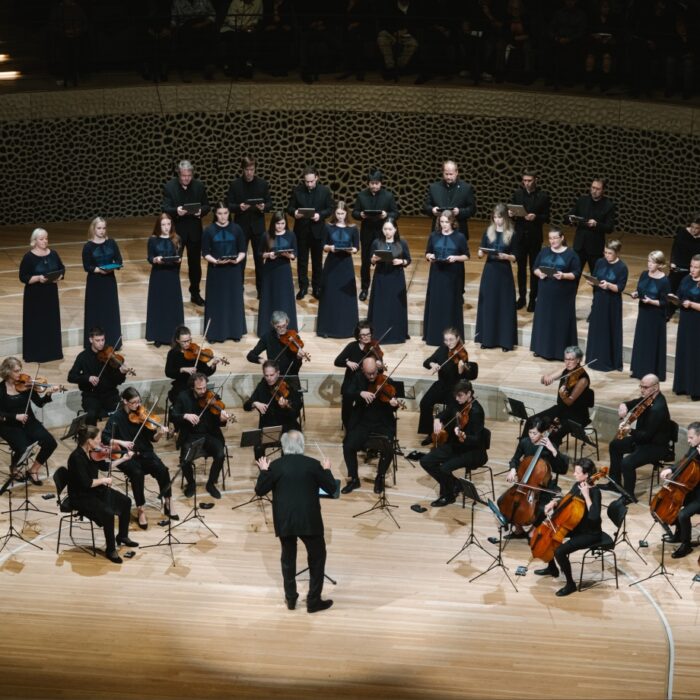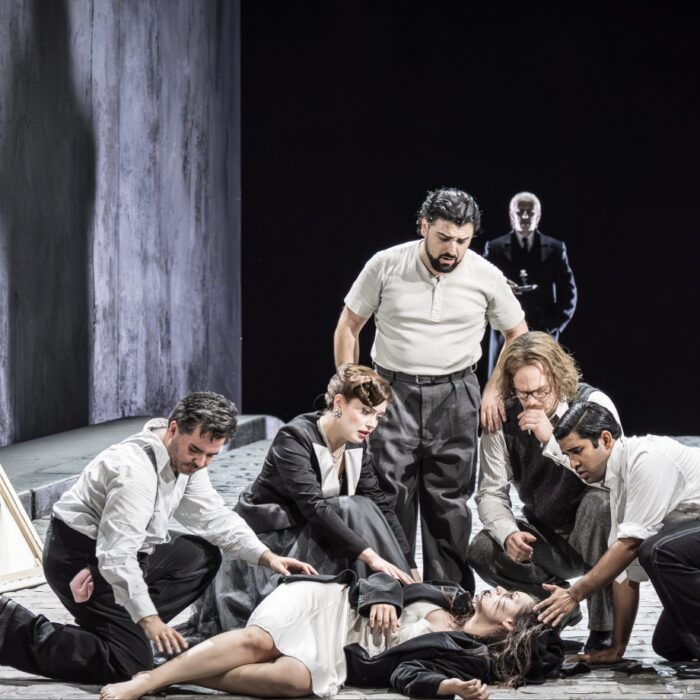
Chicago Symphony Orchestra 2017 Review: Riccardo Muti Delivers Wondrous Taste of Italian Opera
By David SalazarFor decades Riccardo Muti has been one of the finest interpreters of Verdi’s music. In fact, his understanding of the great composer’s style has created countless imitators, but few with the capacity of truly understanding the balance between a propulsive rhythmic emphasis and the nuance of Verdian singing.
On Thursday, June 22, 2017, the maestro showcased his interpretative genius with the Chicago Symphony Orchestra, Chicago Symphony Chorus and Chicago Children’s Choir, in a concert that took a different approach to Verdi’s repertoire. Eschewing soloist, he instead focused his attention on seeing the development of Verdi’s choral writing over the years. The composer is arguably one of the greatest of all time when it comes to writing for the largest of vocal ensembles and this concert was a stark reminder.
Verdi’s Choral Evolution
The concert got kicked off with a swifter rendition of the famed overture from Verdi’s Nabucco, the conductor showing a sense of direct movement throughout the piece. Each section flowed seamlessly, the pauses that one sometimes gets between melodic moments essentially ignored.
Then came four successive Verdi chorus, including three of the composer’s most famous creations. Muti programmed in order of composition, allowing listeners to have a true understanding of the great composer’s mastery and development. Kicking things off with two choruses’ from Nabucco, first the “Gli arredi festivi,” an inspired choice even if not the most obvious. More than any other subsequent choral section, this section allowed the listener to hear stark contrast throughout the choral performances, the potent sounds that came from the agitated opening were eventually replaced with a warmer and more longing tone, Muti allowing for breadth of phrasing in the second section of the chorus. It beautifully set up the uplifting lyricism of the ensuing “Va, pensiero,” the gentle chorus kicked off with an explosive sound during its introduction.
Muti changed things up a bit with Verdi’s other famous chorus, “Vedi! Le fosche notturne,” though everyone knows it as the anvil chorus from “Il Trovatore.” Muti let his choral forces project with all their potency though the chorus was notable for its rhythmic precision and especially the crashing anvils which were far heavier than one might expect from most productions. It amped up the energy of the piece.
To close out the Verdi choral sections was a riveting interpretation of “Patria oppressa” from “Macbeth” which the composer created for the 1865 revision. Unlike the earlier Verdi choruses, this one is far more subtle and more nuanced in its dramatic content. The composer constantly hints at an apotheosis climax, the main melody winding along with growing anguish but never quite exploding into the anticipated apex. The long-suffering Scottish will have a seemingly eternal suffering with no cure in sight. Here the Chicago Symphony Chorus sang with far more subdued sound, at times a gentle whisper and together with Muti and the orchestra, painted a bleak portrait a fallen people. Muti’s way with the music allowed for the melody to feel expansive and ever evolving, such was his mastery of pacing, the chorus never feeling languid or broken up into distinct sections. It all felt like one collective breath, making for the emotional soul of the first half.
To close out the first section and thus creating a perfect structure of opening and closing the first half with overtures, Muti delivered a driven rendition of the “I vespri Siciliani” overture. Muti played up the contrast in this overture, his timpani strikes early on soft and muted and then slowly growing more and more ominous throughout the introduction. The explosion during the Allegro Agitato shaking the hall with passionate sound. The conductor quickly transitioned into the cello melody, giving the overture a constant sense of movement. The “Rossini crescendo” at the end of each of these sections was thrilling and visceral.
Two Intermezzi
Intermission brought about a change of musical style, the vigor and intensity of Verdi replaced by something gentler and more painful. First off was the glorious Intermezzo from Puccini’s “Manon Lescaut,” here interpreted with slower tempo that allowed for the pained and yearning to grow ever more and more intense. Muti never gave into full-fledged chest beating with his interpretation, the musicians restrained throughout, creating even greater tension as we anticipated the emotional outburst. At one point, violin octaves, placed emphasis on the lower octaves, adding to the level of musical restraint. But he eventually allowed the orchestra to push its emotional limits, allowing for a truly satisfying conclusion to a glorious work.
The same can be said for the Intermezzo for Mascagni’s “Cavalleria Rusticana” that swiftly followed, the phrasing tempered in its rubati and yet given expansiveness and breadth. This gentler of intermezzi came off with a greater sense of fragility as a result, providing a beautiful juxtaposition to the more poised and heroic nature in the Puccini.
The Other Main Course
It was apt that we got two intermission pieces before Muti set up his other main course, music from the other genius behind Verdi’s “Otello” and “Falstaff” – Boito.
Performing the glorious prologue from “Mefistofele,” Muti took us somewhere completely different. Far from the heroism of Verdi or the human passions of Puccini and Mascagni, we were now in a celestial realm. And we had a soloist.
The first notes of the prologue immediately reminded us of this shift of tone and world, the orchestra rocketed with sound throughout the theater, the loudest we had heard the orchestra to this point. The chorus back on this time with children delivered glorious singing throughout, the climactic section of the chorus chilling in its ecstatic praise and jubilation. Meanwhile, bass Riccardo Zanellato delivered an elegant and polished interpretation of his scherzo. Instead of playing up the horrid nature of the villain, we get a more refined one with hints of distaste and venom.
While every other selection on the program could be considered a greatest hit, this final part, coming in at around 30 minutes, was an inspired bit of programming by the great maestro and made a fascinating argument for an opera that still gets criminally overlooked. If this was the first time you witnessed the glorious prologue, you were probably hooked.
Speaking of which, this entire program could be the ideal introduction for any opera novice. Filled with lush melody and passion, the superb playing and singing of orchestra and chorus coupled with a genius maestro that still astounds, this is the type of concert that shows why opera is so rich and powerful.


